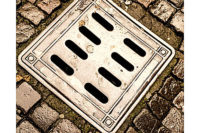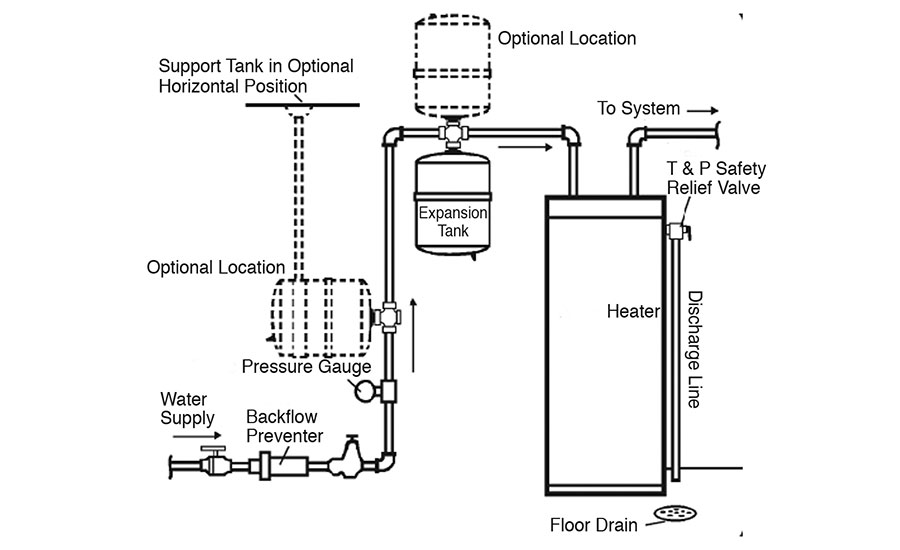The Yin and Yang of water pressure: Balancing water pressure with T&P valves
Plumbing, like many Eastern philosophies, seeks proper balance, man






We all need to find a balance in life. As Jack Torrance from Stephen King’s classic children’s story “The Shining” always said, “All work and no play makes Jack a dull boy.” Whether it is trying to find a healthy work/life balance or trying to squeeze in the football game while checking items off your honey-do list, life is about give and take. Too much on one side will leave the other side short. For example, perhaps if Bruce Banner routinely practiced Tai Chi and Zen meditation he would be able to better control his muscly inner green anger demon when he starts to get stressed out. For me, I am an avid movie fan and amateur photographer, but I also have a 6-year-old and a 14-month-old at home. Hobbies and kids typically do not mix well and we all know where the majority of the effort goes. As much as I enjoy my precious little tax deductions, if I don’t get out of the house and do some of the other things I enjoy in life from time to time, I find my wife soon commenting on how grumpy I get.
Plumbing systems, like everything else in life, require balance in order to operate in an efficient and safe way. Too little pressure in the water supply system and the system can’t operate the way it is intended to since water will not be able to get from point A to point B effectively; not to mention some of the other potential hazards that can occur when the water pressure is too low. Too much pressure and you run the risk of everything from irritating water hammer to major damage to the system’s piping, joints and other components.
Inadequate water pressure
The residual water pressure required for any water supply system is 15 psi. By definition, residual pressure is the pressure available at the fixture or water outlet after allowance is made for pressure drop due to friction loss, head, meters and other losses in the system during maximum demand periods (See UPC Section 218.0). There may be certain fixtures or appliances in an installation that require a higher minimum pressure above 15 psi. In this case, that minimum pressure will be the required minimum pressure. If the main line pressure cannot provide this minimum, the system must be designed using pumps, tanks or both to achieve the minimum required.
Excessive water pressure
A limit of 80 psi is the maximum static pressure of any water supply system. The reason for this is to reduce water hammer, unnecessary use of water, splashing, excessive discharge of pressure relief valves, and to protect appliances, fixture valves and mechanisms from pressure that exceeds their design limits. Any installation with pressures above 80 psi will require a pressure regulating valve to limit the pressure to 80 psi or below.
By design, pressure regulating or reducing valves are modulating valves, which have a high level of flow resistance and consequent pressure drop through them even when fully open. Therefore, pipe sizing downstream of the pressure regulator must be based on “worst-case” pressure loss during a maximum demand water flow. Worst-case pressure loss through a listed pressure regulator is presumed to be no greater than 20%; therefore, the water system is sized based upon 80% of the pressure regulator’s “set” pressure, this being a selected static pressure that is presumed not to exceed 80 psi. Therefore, all pipe size determinations downstream of the regulator must be based on 80% of this reduced pressure when using UPC Table 610.4.
For example, a water system has a pressure of 100 psi. A pressure regulator will be installed and set at 80 psi. For sizing purposes using UPC Table 610.4, the maximum pressure would be 64 psi, which is 80% of 80 psi.
Thermal expansion
Water is, for all practical purposes, an incompressible liquid. This means that as water becomes hotter, it wants to expand, kind of like Bruce Banner when he gets angry. Because it is incompressible, water placed in a closed container can build up high pressure when heated, even when only heated from 40° F to room temperature. This is thermal expansion.
A building water distribution system having a check valve, pressure regulator, backflow preventer or other device that prevents pressure buildup in the building from being able to dissipate back into the source or water supply main, regardless of the type of water heater used, must be equipped with an expansion tank or other means to control the thermal expansion pressures. The expansion tank will absorb excess pressure within the tank (see Figure A). The pressure relief valve relieves the excess pressure by discharging until the pressure drops below the set point (see Figure B).
When the water system is equipped with a storage water heater, pressures rise even more because of the increase in temperature and the high volume of water contained in the tank. All storage water heaters are required to be equipped with a combination temperature and pressure relief valve. Note in Figure B, the combination T&P valve has a temperature sensing tube. The pressure relief valve does not.
Storage water heaters must be manufactured to the ANSI Z21.10 series of standards. These water heaters are protected in three stages. The primary stage is the thermostat. Should the thermostat fail, the secondary stage or high-limit switch will turn off the source of energy to the heater. If the high-limit switch fails, the combination T&P valve opens to prevent a catastrophic failure of the water heater.
There is a misunderstanding throughout the industry that if a tankless water heater is installed, an expansion tank is not necessary; this is not true except for nonstorage instantaneous heaters having an inside diameter of not more than 3 in. These small point-of-use units are without a storage reservoir, having only a heating coil that does not allow significant thermal expansion. Instantaneous water heaters having an inside diameter of 3 in. or less are also exempt from having to meet the requirement for a T&P valve. This is because there is no significant volume of water other than in the pipe itself to cause expansion. When the need for hot water has been met, the instantaneous water heater shuts off.
When installing a T&P valve it is critical that the installer check the rating plate on the combination T&P valve before installation to make sure that the Btu input rating of the water heater does not exceed the maximum Btu rating of the valve. The use of an undersized combination T&P valve could result in a catastrophic water heater failure should both the water heater thermostat and the water heater high-limit switch fail. In instances where there are two separate Btu ratings on the valve plate, the smaller of the two is used in making this determination. For more information, see UPC Chapter 5.
Manufacturers of T&P valves require that the valve be installed with its temperature-sensing element immersed within the top 6 in. of the tank since this is where the hottest water in the tank is located (see Figure C). Manufacturers recommend they be manually opened at least once a year to ensure they are functioning. In areas with a high mineral content in the water, scale can form around the valve seat and render the valve inoperable. In such areas, it may be necessary to manually open the valve every three months or less. A water heater is a potential bomb that is prevented from exploding by three separate safety devices. The combination T&P valve is a lifesaver and is treated accordingly.
It must be emphasized that water heaters operating at pressures above 150 psi are classified as boilers. In fact, water heaters that have a storage volume greater than 120 gal., have a Btu input rating greater than 200,000, or operate at temperatures higher than 210° F, are also classified as boilers and are manufactured to the ASME Pressure Vessel Standard.
As with anything else in life, plumbing systems have to strike the right balance in order to work properly. If you don’t have enough of one, you need to find a way to fill in the gaps. When you have too much of the other, you need to find a non-destructive outlet. Now, I am not guaranteeing that finding a hobby would have mitigated the issues Jack Torrance had or spiritual relaxation techniques would prevent the Hulk from going on a rampage, but in the case of water supply and distribution in a plumbing system, it is a very safe bet that proper management of water pressures will keep the system operating safely and efficiently.
"This article was originally posted on ww.reevesjournal.com."
Looking for a reprint of this article?
From high-res PDFs to custom plaques, order your copy today!












